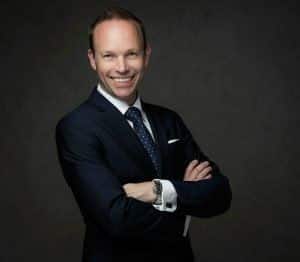I watched the condensation bead and then run down the side of the glass, each tiny rivulet a fleeting moment of cold relief in the humid air. Across the table, Mark chuckled, a dry, weary sound that barely stirred the foam on his own pint. “Guess I’m not the man I used to be,” he quipped, raising an eyebrow that seemed to carry the weight of 51 years. We both laughed, a practiced, almost involuntary response, but beneath it, I felt that familiar, unspoken resignation. That nagging belief that our best years, particularly certain vibrant aspects of them, were undeniably behind us. It’s a shared secret among men, isn’t it? This quiet acceptance of an invisible, yet ironclad, rule.
It gnaws at me, this insidious idea of ‘normal’ decline. Because “normal” isn’t always optimal, is it? It’s often just “common.” Like a common cold isn’t desirable, even if everyone gets one. We’ve been fed a narrative that a steep slide in sexual function, particularly erectile difficulties, is just… part of the package after 41. Or 51. Or 61. A steep decline. It’s an inconvenient truth that, I confess, I swallowed whole for a significant portion of my adult life, thinking I was just being realistic. I’d even found myself nodding along to the common refrain: “What do you expect at our age?” It felt like maturity. It felt like wisdom. Now, I see it for what it truly is: a myth of tragically low expectations. And it’s one of the most destructive narratives we’ve collectively bought into, preventing countless men from experiencing years, even decades, of robust vitality.
Shifting the Paradigm
This unwavering commitment to optimal function, even when faced with what most would call “normal wear and tear,” is precisely the mindset we need to adopt for our own bodies. The medical innovations of our time are not about miracles; they are about precise, informed interventions. They acknowledge the challenges of aging but refuse to surrender to them. They understand that while a 51-year-old body isn’t a 21-year-old body, it can still function at a remarkably high, vital level. It’s about shifting from a passive acceptance of decline to an active pursuit of excellence, identifying those ‘micro-fractures’ in our own systems before they become catastrophic. It’s a paradigm shift, from merely managing illness to actively cultivating healthspan. And frankly, it’s about time we started demanding that shift for ourselves, rather than being quietly shuffled into a perceived medical dead-end.
The accepted wisdom, the one we’ve been quietly agreeing to over countless beers and shared silences, says that by 51, or certainly 61, your sexual prime is undeniably over. Done. Finito. This isn’t a physiological imperative; it’s a cultural hangover, a hangover from a time when medical science hadn’t yet truly begun to understand the intricate dance of hormones, vascular health, and nerve function that underpins male sexual vitality. It’s a narrative born of ignorance, maintained by resignation.
Consider the reality: for every 101 men experiencing some degree of erectile dysfunction, a significant number of them are dealing with issues that are entirely treatable, if not reversible. Yet, because the prevailing “normal” suggests it’s just ‘how it is,’ many never seek help. They resign themselves, feeling a quiet shame that further isolates them. It’s a tragedy, really. A silent epidemic of lost joy and intimacy, all because we confuse “common” with “unavoidable.”
Challenging the “Normal”
I used to be one of those men who quietly accepted the decline. I remember being 41, feeling the first subtle shifts, and just shrugging. “Guess this is it,” I’d think. I even told myself it was character building, this acceptance of life’s natural diminishment. What a crock. It was intellectual laziness disguised as stoicism. I mistook shared resignation for inevitable destiny. This was my mistake: believing that if enough people experience something, it automatically becomes the standard for optimal function, rather than a deviation from it. I now understand that true authority isn’t about knowing everything, but about being willing to question what’s commonly accepted, even when it feels uncomfortable. And trust, I believe, is built on admitting when you got it wrong.
The truth is, while age does introduce new variables, it doesn’t automatically condemn us to a life devoid of sexual vigor. There are tangible, science-backed solutions. We’re living in an era of unprecedented medical innovation. Ignoring these advancements because “that’s just how it is” is like Ruby ignoring that micro-fracture because the bridge is “old.” It’s negligent. Proactive health management isn’t about turning back the clock to 21; it’s about optimizing the present, about extending your healthspan so your vitality doesn’t prematurely dwindle. This isn’t just about erectile function; it’s about a holistic sense of well-being, energy, and mental acuity. It’s about not letting a faulty narrative dictate the quality of your remaining 31, 41, or even 51 years.
101
Embracing Modern Solutions
It means exploring options, understanding what’s available. For many, modern treatments offer a path forward. Take the
for example. It’s a specific, targeted approach that leverages the body’s own regenerative capabilities. It’s not some magic bullet, but it’s a prime example of how medical science is offering real solutions that challenge the old, defeatist narrative. It’s about fostering an environment where tissues can regenerate, where blood flow can improve, where nerve sensitivity is enhanced.
The myth of normal, this pervasive idea that we must simply endure a diminished existence after a certain age, is a cage we build for ourselves. We lock ourselves in, throw away the key, and then wonder why we feel trapped. But the bars are illusory. The keys are available. They lie in a willingness to question, to research, to engage with modern medical understanding that goes far beyond the simplistic “take a pill” solution of generations past. Our health destinies are not pre-written by our birth certificate. They are profoundly influenced by how we define ‘normal’ aging. If ‘normal’ means progressive decline and silent suffering, then that’s exactly what we’ll get. But if ‘normal’ evolves to mean proactive self-care, the pursuit of optimal function, and leveraging every available tool to extend our healthspan, then a vastly different future unfolds.
A New Definition of Normal
This isn’t about chasing some unrealistic ideal of eternal youth. It’s about refusing to settle for a self-imposed limitation. It’s about demanding more from life, and from our own bodies, than a slow fade into the expected. It’s about remembering that the potential for vitality doesn’t abruptly cease at 41, or 51, or even 61. It simply requires a different kind of attention, a more informed approach. An approach that Elite Aesthetics champions, moving beyond the ‘wait and see’ mentality to proactive health management. Ruby wouldn’t allow a bridge to crumble simply because it had reached a certain age. She’d inspect, she’d reinforce, she’d innovate. Why should we treat our own incredibly complex, resilient bodies with any less diligence? We deserve to not only live longer but to live better, with sustained energy, passion, and indeed, vitality, for as long as possible. The ‘normal’ you accept today dictates the future you inhabit tomorrow. Choose wisely.


